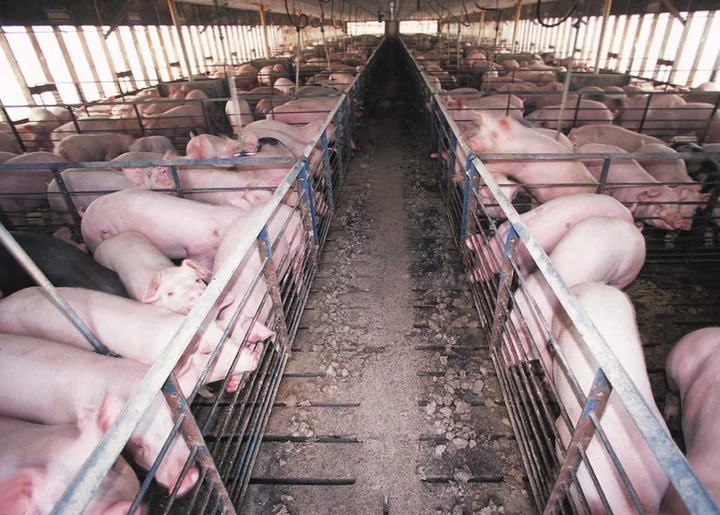“In the next ten years, one of the things you’re bound to hear is that animal protein … is one of the most toxic nutrients of all that can be considered.”
— T. Colin Campbell, director of the Cornell-China-Oxford Project on Nutrition, Health, and the Environment
###
When it comes to diet, humans are usually considered to be omnivores, that is, we’ll eat anything. Almost anything, even mushrooms (some, only once!). In particular, we’re opportunistic carnivores, as opposed to our distant ancestors who survived, as the great apes still do, on plant food: fruit, nuts, leaves, shoots and roots. If meat is there for the taking, we’ll take it.
Most people will, anyway. I’ve been told (as I tuck into my soy burger) that meat eating is natural, it’s in our genes, we were born to crave a juicy steak or a 1200-calorie Wendy’s Big Bacon Triple. But truth is, meat eating is culturally mediated, and it doesn’t take an anatomist to figure out that, as carnivores go, we’re pretty sad specimens. In fact, we’re really herbivores. Consider, for instance:
- Real carnivores have large canine teeth and sharp claws, perfect for killing prey and tearing flesh off. We have dainty fingernails and small canine teeth.
- Carnivores can’t move their jaws from side to side, as herbivores do—watch a cow chewing, or think about our large, flat, back molars, just the ticket for grinding fibrous plants.
- Carnivores make up for their inability to chew by swallowing chunks of flesh whole; what would probably pass for battery acid in their stomachs does the rest. We herbivores have much less acidic stomach juices, good to digest chewed fruit, for instance, not so good for unmasticated meat.
- Humans’ intestinal tracts are long, between 20 and 30 feet long: good to break down and absorb the nutrients from plant matter but bad for meat to pass through, since the bacteria in meat can multiply and cause food poisoning during the long trip from stomach to rectum. Carnivores have much shorter intestines than herbivores.
If our Homo erectus ancestors hadn’t figured out how to start and control fire a million or so years ago, we’d still be chewing plant-stuff. Fire made all the difference: cooking meat pre-digests it, since heating denatures protein (i.e. breaks molecular bonds). See here.
Until a hundred or so years ago, before factory farming came into its own, poor folks raised meat and, for the most part, only rich folks ate it. (It’s no coincidence that following the Norman conquest of England, the Anglo-Saxon words for animals — cows, sheep, pigs — were subsumed by the words used by their Frenchified overlords for cooked meat: boeuf, mouton and porc.)
See page for author, Public domain, via Wikimedia Commons
Today, Americans eat meat by the bucketful, on average over 200 pounds per person annually, with all the consequential health problems. Meat eaters have a greater incidence of heart disease, strokes, diabetes and obesity than non-meat eaters. (Correlation isn’t causation, but still…) Oh, and each pound of meat uses about 2,000 gallons of water to get it to the table.
Summing up, meat isn’t essential to good health and is probably harmful. (Protein comes in many non-meat forms, and B12, the only essential vitamin coming exclusively from animal sources, is found in fish and eggs — and supplements.) Our bodies aren’t designed to eat meat; instead, we’ve adapted to it.
If any of this strikes a chord, check out the Good Food Institute, a nonprofit think tank working to accelerate the production of “alternative protein,” i.e. meat, indistinguishable from the real thing, made from plants or cultivated from cells.

CLICK TO MANAGE